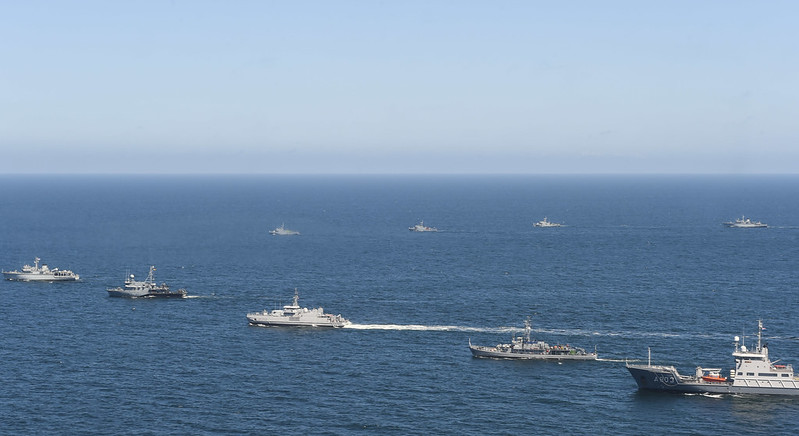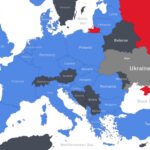
BALTIC SEA (June 8, 2015) NATO ships are underway in formation during the opening movements of BALTOPS 2015. BALTOPS is an annual multinational exercise designed to enhance flexibility and interoperability, as well as demonstrate resolve among allied and partner forces to defend the Baltic region. (U.S. Navy photo by Mass Communications Specialist 3rd Class Timothy M. Ahearn/Released)
With Finland joining and Sweden seemingly close behind, NATO has a new level of power in the Baltic Sea. Sophia Besch discusses what that power means for the alliance moving forward. She writes in Foreign Policy:
Sweden’s suddenly cleared path to NATO membership casts the Baltic Sea region in a new strategic light. For the first time in modern history, every state in the region except Russia will be part of a single, close-knit military alliance, which has led some to giddily declare the Baltic Sea a NATO lake. Other than the fate of Ukraine itself, the creation of a powerful northeastern bloc in NATO is the most strategically significant fallout for Europe from Russian President Vladimir Putin’s decision to go to war.
The Baltic region is also a crucible from which the answers to many of NATO’s most pressing questions could emerge. What does a coherent strategy for deterring Russia look like? How can the Baltic states best be defended? What capabilities are needed, and how will they be integrated across the alliance? The contributions of NATO’s newly unified Baltic bloc—the Nordics, the three Baltic states, Poland, and Germany—to European defense will be vital to the resilience of the alliance.
With NATO focused on supporting Ukraine and better securing the bloc’s eastern frontier, another vital effect of northeastern security cooperation is only now beginning to receive the attention it deserves. The region must urgently address two overlapping challenges: maritime infrastructure protection and energy security. Indeed, in addressing these vulnerabilities, the countries of the region could collectively strengthen security, become a laboratory for how to protect maritime infrastructure, and serve as a model for other regions to follow.
The Baltic Sea, just like the North Sea farther west, hosts a dense web of critical infrastructure links: ports and terminals, undersea pipelines, electricity transmission cables, and telecommunication cables. And their number is expected to grow: As the region completes a massive swing away from Russian energy, governments are expanding their liquefied natural gas (LNG) import infrastructure, building out offshore wind parks, and investing in new undersea power transmission lines. As the Baltic states accelerate their departure from the Russian power grid—a legacy from when they were annexed by the Soviet Union—they are making significant investments in power links with Europe. These and other investments will create an even denser network of critical infrastructure, particularly in an already crowded Baltic Sea.
Of course, Russia still maintains power projection capability, mainly through its naval, air, and missile bases in Kaliningrad—and unlike Russian land forces, these have not been gutted by the Kremlin’s war in Ukraine. The Russian Navy may be underfunded, but its underwater capabilities are growing in strength. Although the perpetrators have not been definitively determined, the underwater bombings of two Nord Stream pipelines near the Danish island of Bornholm in September 2022—as well as ongoing Russian threats and operations in the Baltic Sea and North Sea—have forced European governments to pay more attention to their highly vulnerable offshore energy and other infrastructure.
Read more here.
If you’re willing to fight for Main Street America, click here to sign up for the Richardcyoung.com free weekly email.





